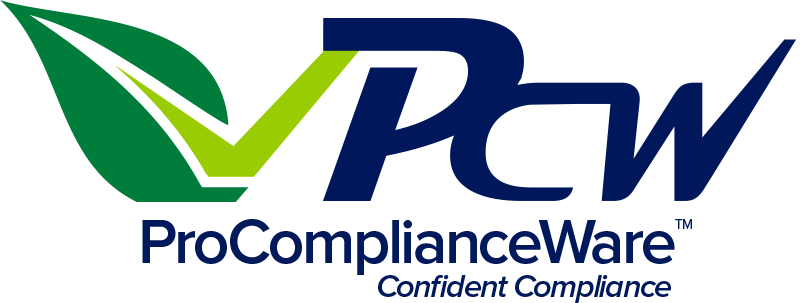Does Compliance Management Guarantee Reduced Business Costs?
The pressure on organizations to conform to effective compliance management practices is increasing. Companies are expected to adhere to stringent quality control checks and scrutinize their operations to ensure proper management of hazardous substances, such as the release of dangerous air pollutants and toxic chemicals. According to Deloitte’s 2015 Compliance Trends Survey, more than 80 percent of organizations have reported that they carry out some kind of a comprehensive compliance risk management procedure and more than 60 percent undertake it on an annual basis.
It is often argued that the more compliant an organization is, the better it reflects its commitment to promote a safer and healthier environment for others. However, regardless of what the compliance requirements are, cost is the barometer of financial success and performance. The higher the business costs as a result of compliance standards, the less likely it will be that organizations will respond with the enthusiasm required by environmental organizations and governmental bodies, such as EPA.
This brings the question of whether compliance management guarantees reduced business costs and helps companies to further their organizational goals. Let us explore this in detail.
Types of Compliance Costs
Companies are expected to meet a number of expenses to meet compliance requirements. The costs of regular paperwork and documentation along with audit expenses that have to be paid out on an annual basis can eat away profitability and force companies to settle with fewer earnings.
There are also licensing costs that have to be met; software license audits can be staggering in terms of cost and, very often, the difference between licensing costs and actual company use can reach nearly $ 1 million. The intricacy of managing multiple, complex contracts worth billions of dollars, in the case of large multinational companies, can amount to considerable yearly expenses in order to meet compliance requirements.
Costs can rise even further as your business attempts to scale and expand its presence in multiple locations spanning thousands of miles. The regulation and monitoring of compliance standards and measures per every cost center, business unit, and department can grow exponentially that can limit your company’s potential for growth and survival.
On the flip side, failing to meet compliance requirements can result in heavy fines and penalties. The US Environmental Protection Agency (EPA) last year raised the amount for civil penalty violations in accordance with EPA regulations and environmental laws, such as the Federal Civil Penalties Inflation Adjustment Act of 1990. In conformity with the Resource and Conservation and Recovery Act (RCRA), EPA has raised the upper limit of the civil penalty to more than $70,000 per violation, per day from $37,500 for the same act.
Other penalties include the Clean Air Act violation of over $90,000 and more than $50,000 in fines for violations of SDWA, EPCRA, and CERCLA. Other environmental bodies, such as OSHA and PHMSA stipulate other penalties for violations, such as the latter’s penalty for neglecting to train and educate hazmat personnel.
Whether the aforementioned penalties outweigh the administrative cost of meeting compliance standards will vary according to the act of the company and the extent of the violation.
However, a more pressing problem of compliance management is when risk assessments are conducted as a disparate department level. For example, audit procedures and policies are one for HR, but different for IT and Finance departments. This decentralized risk management leads firms to incur unnecessarily high administrative costs, making compliance management a burden rather than a feedback for corrective action and organizational accountability.
Furthermore, in most cases, the unplanned and uncoordinated implementation of risk assessment fails to take account of appropriate testing methodologies and information that also leads to poor compliance management and risk minimization. It for this very reasons why many companies face financial losses since they do not approach compliance management with the proper strategy, planning, and points of corrective action.
Companies can only reduce costs through compliance management by consolidating their risk management procedures and practices across all levels in their organizations through a centralized system. This requires the implementation of GRC control and procedures that can enable organizations to synchronize all of their activities and information for efficient compliance management and regulation.
What Is GRC?
GRC is an abbreviation for governance, risk management, and compliance. It is a term designated to synthesize three basic fields for organizational performance and efficiency and provides companies a comprehensive approach of laying out compliance standards, business practices, and quality standards to achieve these aims with precision and accuracy.
The comprehensive risk management approach of GRC ensures companies are able to identify and correct inconsistencies and issues in their operations much quicker, helping them saving thousands’ worth in not just penalties, but operating losses and unnecessary maintenance expenses.
GRC controls also serves as a proactive compliance management mechanism, which means that instead of filtering out problems on a needs basis, GRC enables companies to have tremendous foresight in anticipating and recognizing future problems. The ultimate question is, however, is that does GRC help companies benefit from lower costs? The answer is a definite yes.
Through this unified and centralized compliance management approach, companies can expect to witness reduced compliance management costs both in terms of audit, paperwork, and, most importantly, penalty violations. Companies are able to benefit from greater information and process transparency that helps in reducing licensing and resource costs.
How Technology Improves GRC Control Implementation
Although there are several actions you need to ensure for the correct and comprehensive implementation of GRC controls for more efficient and cost-effective compliance management, one in particular is investment in the right technology solutions.
The growth in technology solutions, such as cloud and automation tools enable intelligent decision making and data collection at reduced administrative costs. Technology can be used to monitor key controls and risk assessments that can allow you to stay updated with changes in compliance requirements in a near real-time basis.
More importantly, technology solutions can help automate your GRC controls and procedures that can simplify and improve business process efficiency by minimizing anti-fraud risks and controls. This can help identify and contextualize business rules and control in accordance with specific business objectives and set measures to detect risks and promote higher quality of practices.
Benefits of Cloud Integration for GRC
Cloud computing has become a necessary pillar for operating a successful organization or business, owing to its high transparency, reduced operating costs, and greater potential for scalability. Integrating cloud for overseeing GRC procedures and controls thus can provide a significant boost in easing the burden of managing fragmented audit reports and analyses and consolidate them in a single point of access to ensure a smooth and consistent implementation across the entire organization.
ProComplianceWare for Quality Compliance Management
The ProComplianceWare (PCW) cloud-based compliance management software can help your companies to run risk management assessments and view audit reports with unprecedented ease-of-use and convenience. The scalability of the software can help you respond to the rapidly evolving laws and regulations and enable you to stay up-to-date with changes without wasting precious administrative activities and expenses.
PCW’s cloud system can further be of use in archiving and compiling vast amounts of business records and compliance data and benefit users via a highly intuitive and fluid user interface. Compliance management becomes challenging when you have to respond to deadlines, and if you are a company with large operations, keeping track of these deadlines can be almost impossible. PCW, on the other hand, can electronically keep track of different compliance deadlines for several different purposes whether these are inspections or employee training.
When your company is nearing a compliance deadline, the cloud-based software can alert to the assigned personnel to take prompt action. If the deadlines are missed, a notification can be configured to be sent to senior management to offer increased accountability and transparency.
What This Means for Small and Medium-Sized Businesses?
The complexity of carrying out comprehensive compliance management activities and procedures are normally thought of from the standpoint of large multinational companies. However, the cost-reducing and simplicity of use of the cloud-based PCW software can help ensure small and medium-sized businesses can bolster their compliance management efforts at low costs.
Furthermore, since PCW is cloud-based, small and medium-sized businesses do not have to pay one-time fees for purchasing and installing the software on their computer. All that is required is for the user to access their online account and load the compliance management system to undertake all compliance related efforts from a single access point.
As a representative of your business or organization, it is imperative that you conform to various compliance requirements of government regulation and laws. While compliance management is considered to be a burden, owing to its administrative expenses, it can be perceived as a mechanism for corrective action and associated high costs. By incorporating innovative technologies, such as the cloud-based PCW compliance management software, you can effectively oversee and manage GRC controls across the entire organization and benefit from lower operating costs and enhanced financial performance.
Sources
https://www.lion.com/lion-news/july-2016/epa-raises-civil-penalties-for-environmental-nonco










